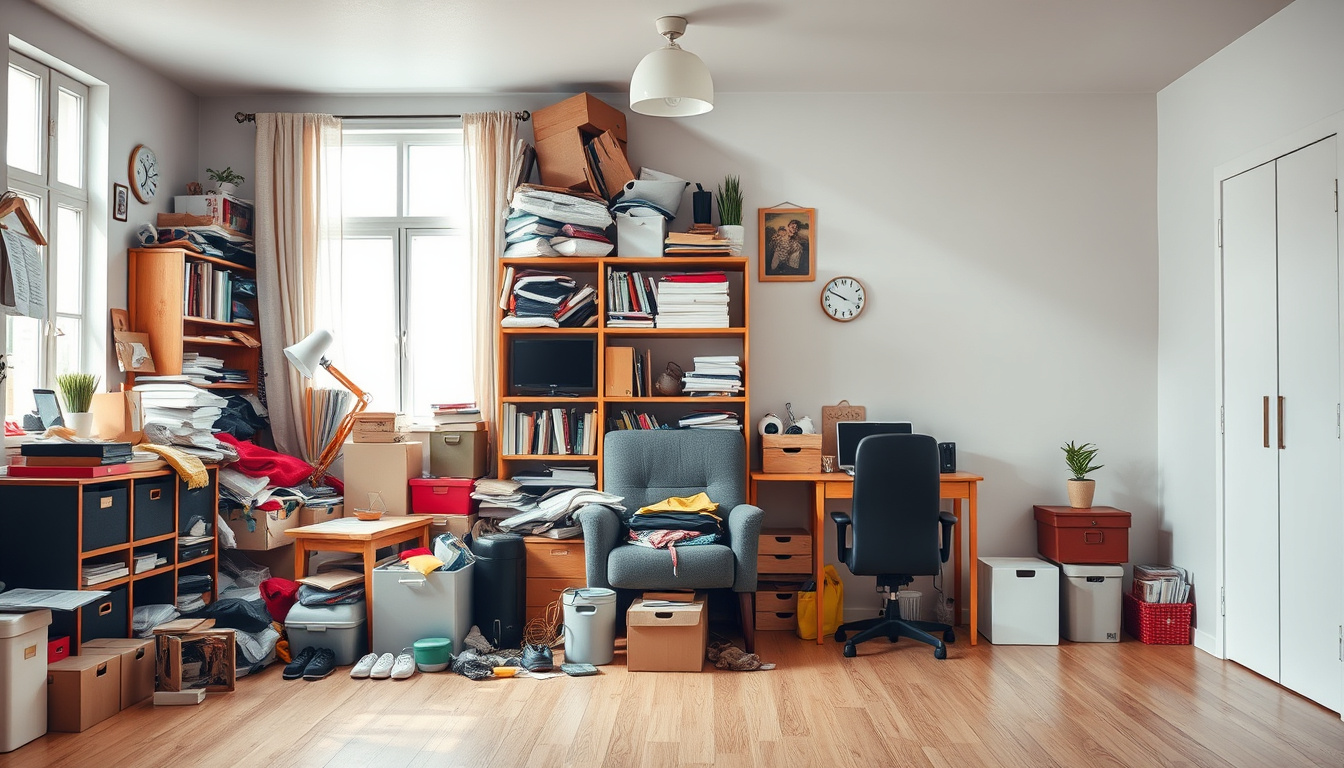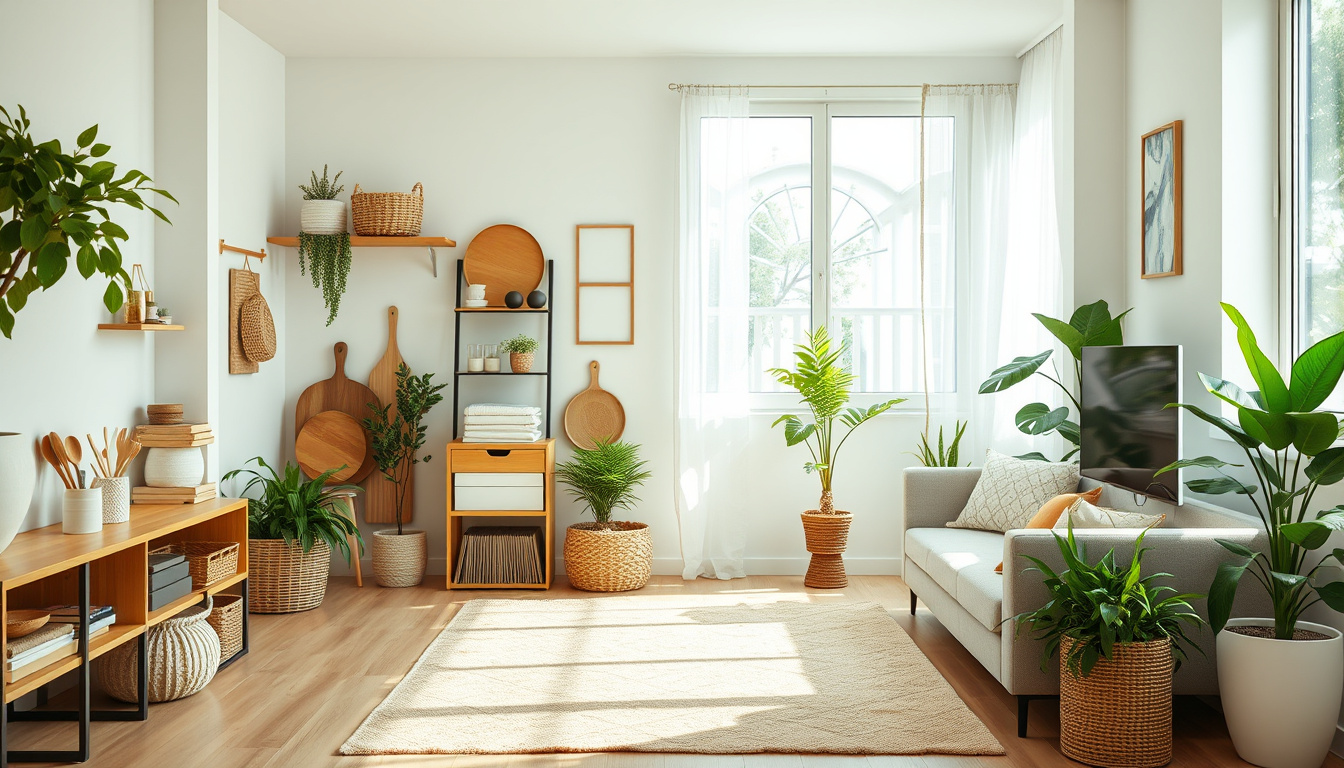The Psychology Behind Your Clutter & How to Beat It
In a world where minimalism is often seen as the ideal, many of us find ourselves struggling with clutter. But have you ever stopped to consider the psychology behind your clutter and how to beat it? Understanding that emotional connection to our belongings can be the first step toward achieving a more organized space and a clearer mind. This article delves into the psychological factors that lead to clutter accumulation, the impact of clutter on mental health, and effective strategies to reclaim your space and create sustainable decluttering habits.

Key Takeaways
- Clutter often stems from emotional ties to possessions, making decluttering a complex personal challenge.
- Common triggers for clutter include nostalgia, avoidance of decision-making, and fear of waste.
- Excessive clutter can negatively affect mental health, contributing to stress and anxiety.
- Implementing practical strategies like setting small goals and establishing a decluttering routine can aid in overcoming clutter.
- Creating sustainable habits is essential for long-term clutter management and mental well-being.
Understanding the Emotional Connection to Clutter
Understanding the emotional connection to clutter is essential for those looking to tackle disorganization in their lives. Clutter is often not just a physical manifestation of disarray; it represents deeper psychological issues and behaviors. Many individuals find themselves emotionally attached to items, believing they hold memories or significance, which can make the process of decluttering overwhelming. The psychology behind your clutter & how to beat it involves acknowledging these attachments and learning strategies to reduce them. Studies have shown that emotions like fear of letting go, guilt about waste, and biases about the future utility of items can significantly influence our clutter habits. To successfully manage and overcome clutter, it’s important to confront these emotional ties, engage in mindful decluttering practices, and set achievable goals that help in establishing healthier habits. By understanding your relationship with your belongings, you can create a more organized, stress-free living environment.
Common Psychological Triggers for Clutter Accumulation
Understanding ‘The Psychology Behind Your Clutter & How to Beat It’ begins with recognizing the emotional and cognitive triggers that lead to clutter accumulation. Many people hold onto items due to sentimental value, fear of waste, or a desire to keep memories alive. This attachment can create a psychological barrier to letting go, resulting in overloaded spaces. Additionally, stress and anxiety can lead us to overshop or neglect our organizing routines, further compounding the issue. By identifying these common psychological triggers, individuals can start to address the underlying emotional concerns that contribute to clutter. Techniques such as mindfulness and cognitive behavioral strategies can be effective tools in reshaping our relationship with possessions, empowering us to declutter and create a more serene living environment. By understanding the root causes of clutter, we can implement effective strategies for not just managing, but beating it.
‘The first step in crafting the life you want is to get rid of everything you don’t.’ – Joshua Becker

The Impact of Clutter on Mental Health
Clutter can creep into our lives, often without us even realizing it, and the impact of this accumulation extends far beyond a disorganized space. The psychology behind your clutter reveals how our physical environment influences mental health. Studies have shown that excessive clutter can lead to feelings of anxiety, stress, and even depression, making it crucial to understand why we hold onto items we no longer need. The presence of clutter can overstimulate our senses, leading to difficulties in focusing and completing tasks, while also conflicting with our ability to relax and unwind in our own homes. To beat this cycle, it’s essential to confront our clutter by assessing the emotional attachments we have to our belongings, establishing a decluttering routine, and creating a more serene living environment that promotes clear thinking and emotional well-being. Addressing the clutter not only enhances the aesthetic of your space but also contributes significantly to improved mental clarity and overall happiness.
Practical Strategies to Overcome Clutter
Understanding the psychology behind your clutter is essential in effectively overcoming it. Many individuals find themselves surrounded by unnecessary belongings, which often stems from emotional attachments, past experiences, or even a fear of letting go. To beat clutter, start by assessing your belongings with a critical eye; ask yourself whether each item adds value to your life or contributes to the chaos. Implementing practical strategies, such as the ‘one in, one out’ rule—where you eliminate one item for every new item you bring into your home—can significantly reduce clutter over time. Additionally, create a designated space for every item, ensuring you have a clear and organized system for your belongings. Regular decluttering sessions can also be beneficial, making the process less overwhelming. By addressing the underlying psychological factors and applying these strategies, you can not only overcome clutter but also create a serene and organized environment that enhances your well-being.

Creating Sustainable Decluttering Habits
Creating sustainable decluttering habits goes beyond simply tidying up your space; it requires an understanding of the psychology behind your clutter and how to beat it. Clutter often symbolizes deeper emotional attachments, anxiety, or decision fatigue, making it essential to approach your decluttering journey with empathy towards yourself. Start by reflecting on the items you hold onto—what emotions do they evoke? By recognizing these feelings, you can start to make more intentional decisions about what to keep and what to let go. Establishing a routine can also help; try committing to declutter a specific area for just 10 minutes a day. This manageable approach can prevent overwhelm and foster a sense of accomplishment. Additionally, integrating the concept of minimalism into your life encourages a mindset shift, allowing you to appreciate experiences over possessions, ultimately leading to a more fulfilling and organized environment. Understanding the psychology behind your clutter and implementing consistent, realistic decluttering habits can pave the way for a more serene and balanced life.
Frequently Asked Questions
What is the psychological connection between individuals and their clutter?
Many individuals have strong emotional ties to their belongings, viewing them as extensions of their identity or memories. This emotional connection can make it difficult to part with items, even when they contribute to clutter.
What are some common triggers that lead to clutter accumulation?
Common psychological triggers include anxiety, procrastination, perfectionism, and a tendency to avoid decision-making. These factors can lead people to hold onto items rather than letting go.
How does clutter impact mental health?
Clutter can increase stress levels, create feelings of overwhelm, and contribute to anxiety or depression. A chaotic environment can distract from focus and decrease overall productivity.
What practical strategies can I use to overcome clutter?
Some practical strategies include setting small, manageable decluttering goals, using the ‘one in, one out’ rule, and establishing a regular cleaning schedule to maintain spaces.
How can I create sustainable habits to prevent clutter from accumulating again?
To maintain a clutter-free environment, develop routines that include regular decluttering sessions, reassessing items seasonally, and being mindful about purchases to avoid impulse buying.
